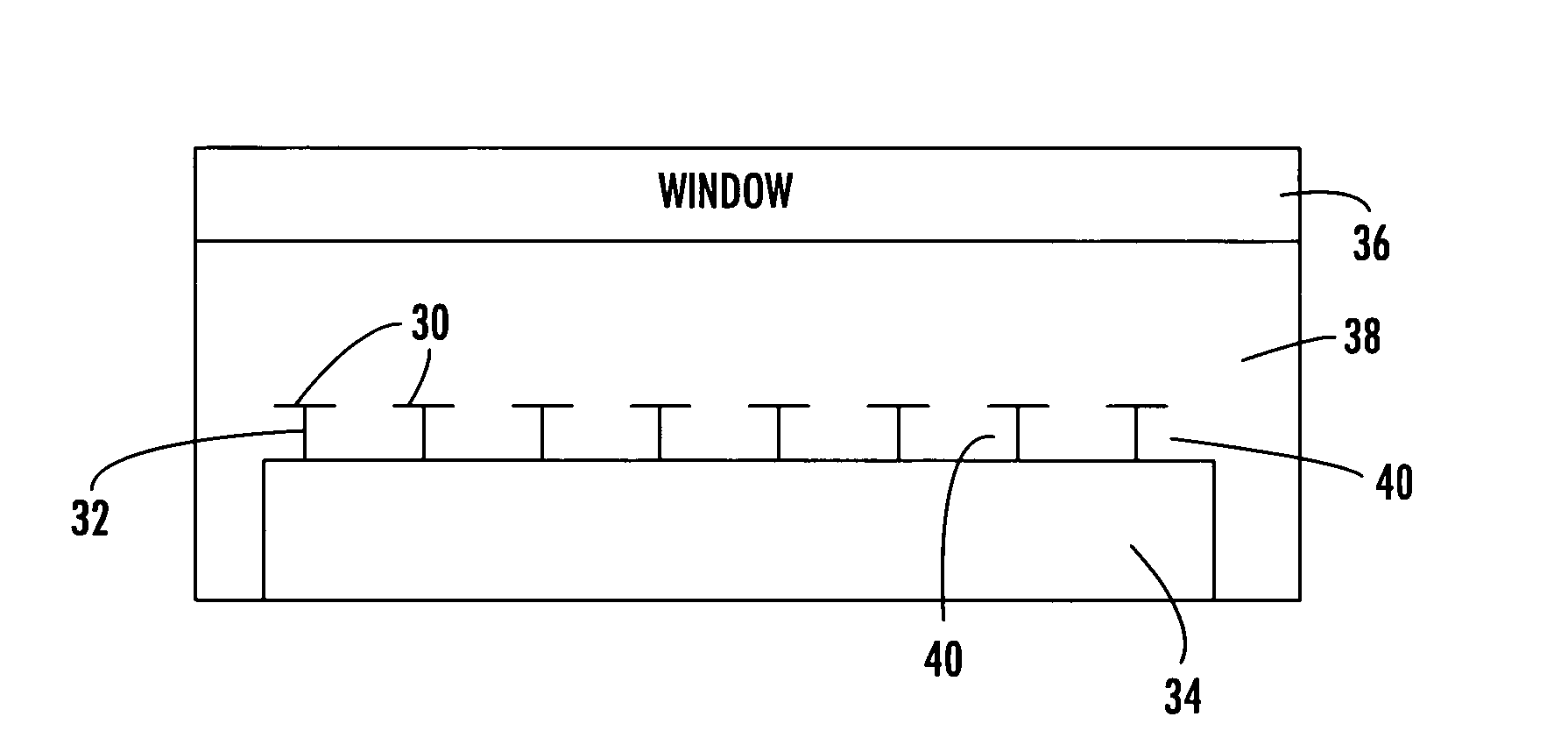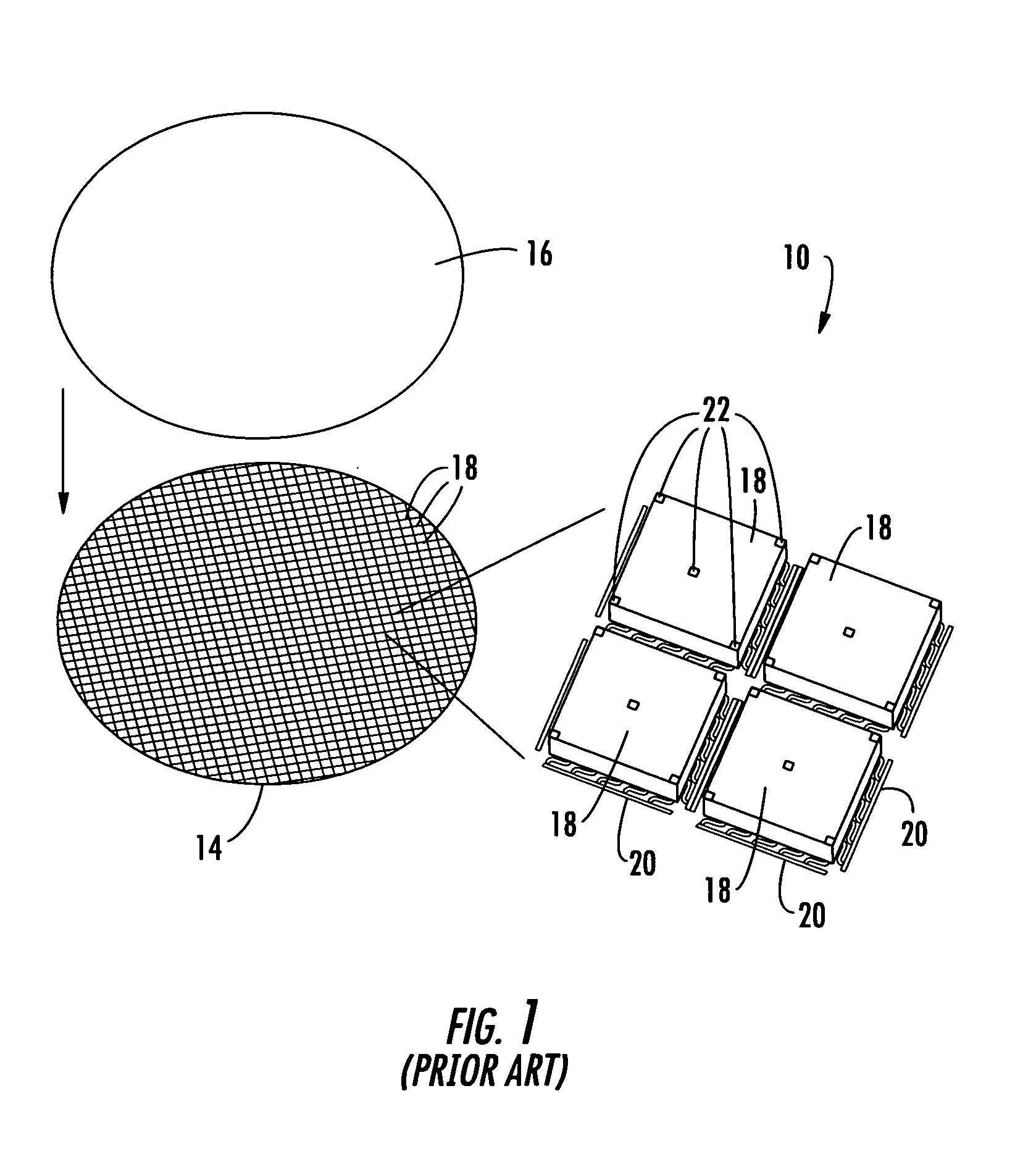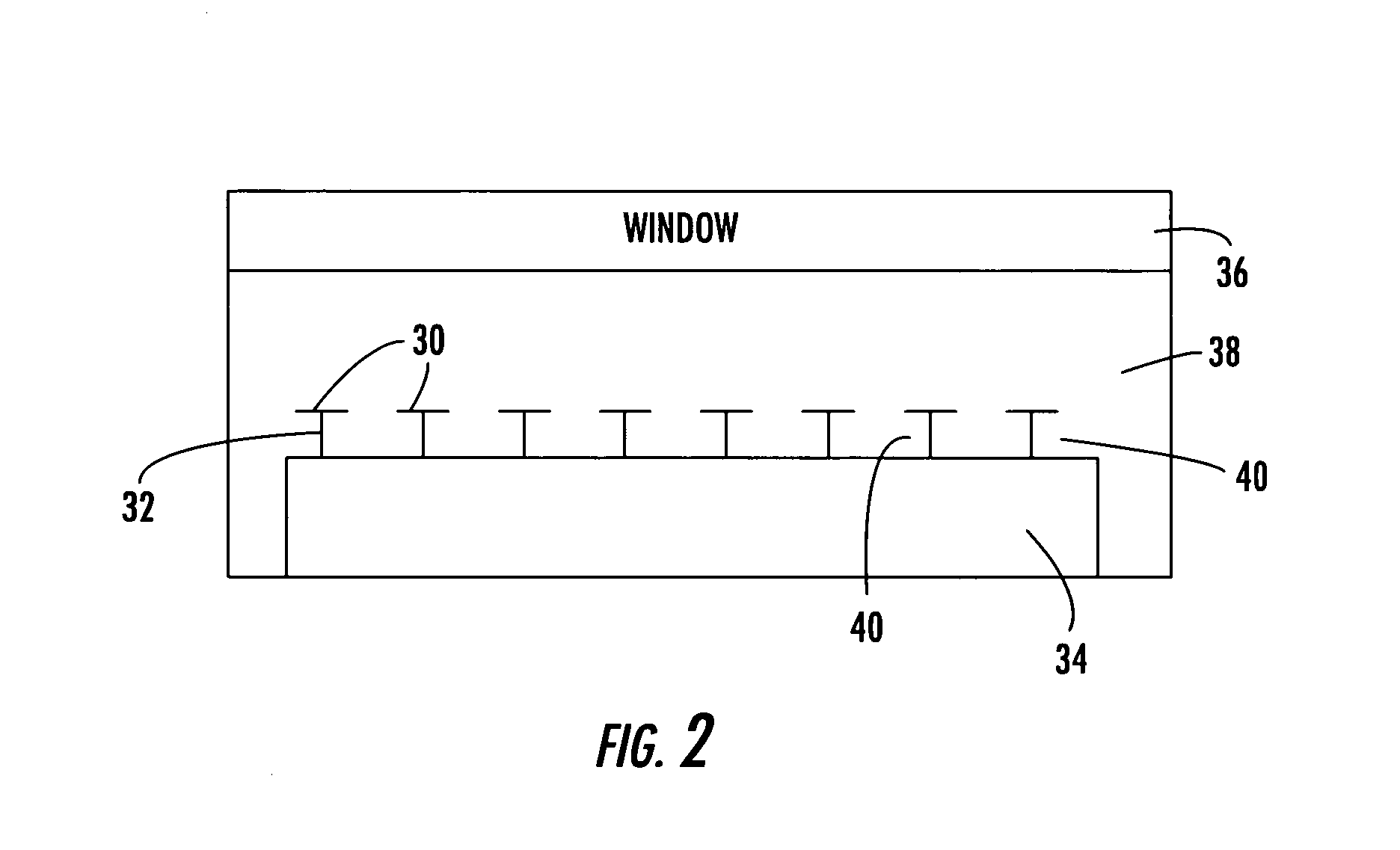Micron gap thermal photovoltaic device and method of making the same
a thermal photovoltaic and micro-gap technology, applied in the manufacture of cables/conductors, pv power plants, coatings, etc., can solve the problems of uncontrollable power output variance, temperature increase, and inability to effectively collect electrons, etc., to achieve the effect of convenient manufacturing
- Summary
- Abstract
- Description
- Claims
- Application Information
AI Technical Summary
Benefits of technology
Problems solved by technology
Method used
Image
Examples
Embodiment Construction
[0060]Thermal photovoltaic generator 10, FIG. 1, as disclosed in U.S. Pat. No. 6,232,546, includes emitters 18 on panel 14 supported thereon by flexors 20. The top surface of the emitters are spaced from photovoltaic device 16 by spacers 22 formed on each emitter. As such, photovoltaic device 16 and panel 14 must be joined together. Given that the gap between the top surface of each emitter and photovoltaic device 16 is typically less then one micron, particles can contaminate the resulting structure and topological surface variations and other surface defects can pose manufacturing difficulties. Moreover, the high temperatures associated with the emitters can cause deformation or breakage of the emitter / flexure / panel structures.
[0061]In the invention described herein, the emitters 30, FIG. 2 and their standoffs 32 upstanding from photovoltaic substrate 34 are formed directly on photovoltaic substrate 34 using deposition, patterning, and etching techniques thus eliminating the need ...
PUM
| Property | Measurement | Unit |
|---|---|---|
| thickness | aaaaa | aaaaa |
| height | aaaaa | aaaaa |
| height | aaaaa | aaaaa |
Abstract
Description
Claims
Application Information
 Login to View More
Login to View More - R&D
- Intellectual Property
- Life Sciences
- Materials
- Tech Scout
- Unparalleled Data Quality
- Higher Quality Content
- 60% Fewer Hallucinations
Browse by: Latest US Patents, China's latest patents, Technical Efficacy Thesaurus, Application Domain, Technology Topic, Popular Technical Reports.
© 2025 PatSnap. All rights reserved.Legal|Privacy policy|Modern Slavery Act Transparency Statement|Sitemap|About US| Contact US: help@patsnap.com



